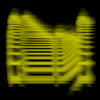| Author
|
An insight in2 melodies and psy
|
bukboy
Hyperboreans

Started Topics :
40
Posts :
803
Posted : Sep 15, 2006 09:00
|
I just realised last night that the strength of melodies is decided by the strength of the cadences they follow.
This also explains Y psytrance doesnt really tolerate complex harmonies with funny cadences, and also Y its hard 2 get a good sounding modulation. simply becoz the melody wont sound as compelling.
Obvious now but I never knew. 
Opinions? Am I confused? |

|
|
bukboy
Hyperboreans

Started Topics :
40
Posts :
803
Posted : Sep 15, 2006 12:08
|
Dont all write in at once, hey.  |

|
|
djzed

Started Topics :
3
Posts :
48
Posted : Sep 15, 2006 13:20
|
I may have to brush up on my classical theory, but as far as I know a "cadence" is simply where a chord resolves into another chord. So for example a G7 chord resolving to a C.
When you say "the strength of melodies is decided by the strength of the cadences they follow" do mean that a melody will be a more strong if it follows a chord structure, rather than constantly following the tonic chord?
If this is so, I very much agree with you. For people who don't understand what I'm talking about, I'll try my best to explain:
Most psy tracks don't appear to use chord structures at all. The bassline is mainly sticking around a single note, the tonic note, and throughout the track that bassline won't usually vary that much and it hardly ever modulates to a different key. So it would appear that the melodies that sit on top of that baseline would all imply the tonic chord without any actual changing chord structure.
But what I've found is that you can have a moving chord structure in your music even though you keep the bass on that same tonic note. This essentially the same as a "drone" (steady, constantly reiterated note) and is actually something that has been used in almost all styles of music around the world in history (tribal music, medieval, baroque, classical, jazz, etc).
The trick is to imply your cadences (or chord structure) through your melody. Probably the most simple example I can think of is Astrix's "Poison" on Artcore. The key of this track is E flat minor. Listen to the climax section. While this melody is played you will hear the strong, constant drone of that E flat note being played in the bass. But if you listen to the actual melody there is an implied chord structure:
|Eb minor | Db major | Eb minor | Db major |
(btw i have used "b" to mean flat).
When you shape your melodies along nice chord structures they become more purposeful, and the melody flows alot more easily, like it is going through a state of tension then resolution (which is essentially what a cadence is). And it works great when you have a drone as your bassline.
So there's a little tip for people struggling to write melodies!
|

|
|
bukboy
Hyperboreans

Started Topics :
40
Posts :
803
Posted : Sep 15, 2006 15:00
|
U see: uv put it wonderfully.
"The trick is to imply your cadences (or chord structure) through your melody."
I was making complex motions & modulations etc but somehow disconnected from the melody.
My problem was always that I wasnt consciously trying to imply melodies based on a strong harmonic motion and cadence, and always wondering Y my melodies didnt have impact.Maybe I thought melodies and chords were sorta constructed separate, meanwhile there has 2 b a friggin really large connection between the 2.
Im not sure I can explain exactly what I was thinking, but something has clicked in my head. (melodies are basically bits of ur chords 1st,3rd,5th,7th which should b stressed, and the passing notes in between can b used but if u stress them then u imply a different chord.)
Theres a school of philosophy which says that if ur thoughts arent clear on a subject then u dont understand it. damn  but at least I sorta think I know. but at least I sorta think I know. |

|
|
bukboy
Hyperboreans

Started Topics :
40
Posts :
803
Posted : Sep 15, 2006 15:21
|
actually what I meant to say is that a melody doesnt sound good if it doesnt imply a strong harmonic chord movement and cadence.
By strong I mean motion in the circle of fifths , minor2nd major 5th and minor1, can b one combination.also Im sure its possible to do substitute dominant sevenths etc.
But what I mean is that if u dont have a gr8 sounding, rounded chord structure, then the melody which implies it is also gonna b crappy.(well not crappy, but not easily listeneable, and definitely not psy trancish, maybe jazzy) |

|
|
Colin OOOD
Moderator

Started Topics :
95
Posts :
5380
Posted : Sep 15, 2006 20:05
|
|
djzed

Started Topics :
3
Posts :
48
Posted : Sep 16, 2006 04:45
|
Quote:
|
On 2006-09-15 20:05, Colin OOOD wrote:
It's also perfectly possible to use chord structures that stray far away from the circle of fifths
|
|
For sure. You can very often user chords that go outside the key you are in, as long as you always come back to the tonic (the tonic should be the first chord in your chord-sequence). I like doing this because there is a world of possibilities with this, and it can really give your music a unique sound.
Making a nice-flowing chord sequence is really something you need to get a feel for. I'd recommend for anyone who wants to write psy to learn guitar or piano, and just muck around with chords to get a feel for how they work. Even listen to your fav psy tracks and try to figure out the implied chord structure. It will help alot. |

|
|
bukboy
Hyperboreans

Started Topics :
40
Posts :
803
Posted : Sep 16, 2006 09:18
|
Ofcourse I didnt mean all u can use is circle of fifths, that was just an example.
I think what ur talking about guys is called modulation, when u use a chord out of scale.Modulation basically means u use a "pivot" chord to change keys, this pivot chord has to b valid in both keys, and then u can smoothly use different scales 2 ur hearts content.
And it seems I was wrong about melodies needing a strong harmonic motion.I just heard a melody based on one single chord in phrygian mode that sounded gr8.
Seems like that old saying is true:-) Theres nothing more dangerous than a philosopher in the throes of a theory. 
He'll sacrifice anything. |

|
|
Colin OOOD
Moderator

Started Topics :
95
Posts :
5380
Posted : Sep 16, 2006 15:18
|
No, I'm not talking about modulation [/i]per se[/i]; modulation is more of a structural device than a melodic one, ie. you'll generally use it to make different sections of your track use different keys. It can be used as a melodic device, obviously, but it's a virtual 100% guaranteed route to the smelliest of cheese. Even when used structurally you have to be very careful not to let the smell of Gouda escape.
What I was talking about was being more chromatic with the chord changes, as this will sound much more interesting and atmospheric than sticking with I-IV-V. You'll need a good melody to tie it together though or it'll just sound like a collection of random chords with no coherence.
        Mastering - http://mastering.OOOD.net :: www.is.gd/mastering Mastering - http://mastering.OOOD.net :: www.is.gd/mastering
OOOD 5th album 'You Think You Are' - www.is.gd/tobuyoood :: www.OOOD.net
www.facebook.com/OOOD.music :: www.soundcloud.com/oood
Contact for bookings/mastering - colin@oood.net |

|
|
bukboy
Hyperboreans

Started Topics :
40
Posts :
803
Posted : Sep 16, 2006 19:03
|
Colin: A change to a phrygian or dorian mode from an aeolian is just a -5 or +5 modulation respectively. And the only difference in the phrygian case is the flat 2. and sharp 6th in the case of dorian. they are both modulations and Ive seen the aeolian turn in2 a phrygian flat 2 quite often in psy as a little insert to give more tension.
Why would u think this is not a modulation, but instead a chromatic change?
Y define modulations as being long term instead of jumping out and in of key 4 a few notes of interest? Y define these as chromatic chords instead?
It is my pet theory that any chromatic motion is actually a modulation. Am I totally wrong? Am I looking at it the wrong way? |

|
|
Freeflow
IsraTrance Full Member

Started Topics :
60
Posts :
3709
Posted : Sep 16, 2006 19:13
|
guys.... make some melodies instead...

|

|
|
Colin OOOD
Moderator

Started Topics :
95
Posts :
5380
Posted : Sep 16, 2006 19:53
|
To my mind a change from one mode to another not what I was thinking of as a modulation; rather a total change in key centre. I'm not fully up on my modes though, you obviously know more about them than I do. However one can equally think of these 'modulations' as being nothing more than the addition of an accidental.
I was not 'defining' modulation as anything, just saying how I see it being used. I did say that it can be used as a melodic device (ie. not just long-term), but perhaps I was too harsh when saying it was a route to cheese, as right now I can visualise traditional-style melodic modulations which are anything but cheesy 
Trance music is based around ostinato basslines, ie. not moving from one note. Even tracks that use more complex basslines still return to a single key centre over and over again as the bassline repeats. Sure, you can think of the chromatic motion as modulation but in this case how is it different from using a few accidentals, when the key centre remains the same throughout the track?
        Mastering - http://mastering.OOOD.net :: www.is.gd/mastering Mastering - http://mastering.OOOD.net :: www.is.gd/mastering
OOOD 5th album 'You Think You Are' - www.is.gd/tobuyoood :: www.OOOD.net
www.facebook.com/OOOD.music :: www.soundcloud.com/oood
Contact for bookings/mastering - colin@oood.net |

|
|
soulfood
IsraTrance Junior Member

Started Topics :
10
Posts :
875
Posted : Sep 16, 2006 20:23
|
I find the most interesting way to make melodies is to imply the root with the bass and any upper chord tones with a really thin pad. If you keep changing the pad note to about 4 variations and the bass on just 2 i.e 2 bars flat 2 then 2 bars on the root. You can get some nice jazzy flavours that sound all spooky.
I think you can probably get away with almost anything sounding cheesey if you dont make it too over the top. When quietly implied those extra chord tones can be quite effective. |

|
|
djzed

Started Topics :
3
Posts :
48
Posted : Sep 16, 2006 21:20
|
Quote:
|
On 2006-09-16 19:53, Colin OOOD wrote:
To my mind a change from one mode to another not what I was thinking of as a modulation; rather a total change in key centre.
|
|
Just so we get our definitions clear, a quote from the oxford companion to music: "Modulation: The contradiction of one key by the establishing of another."
In other words, modulation is something which is used when you wish to leave a particular key to go to a new key. Not changing to a new chord.
Something to understand about psytrance is that it hardly EVER changes key. There are only a few example tracks that I can think of that change key somewhere in the middle:
1. Bust a move - Infected Mushroom.
The classic track does a key change about 5 mins in from G minor to A minor for the climax.
2. Scorpian Frog - Infected Mushroom.
This track is in D minor but modulates to G major (or g phrygian more correctly) about 4.30 mins in for a short period of time then jumps back to D minor.
3. Ration Shmatio - Infected Mushroom. This is in G minor but modulates to Bb minor when it goes into the piano section (4:30 mins in). I find the piece very interesting musically because there is chord structure they use
| Gm | Gm | Gm | Gm |
| F#m| F#m| F#m| F#m|
which they use again after it modulates:
| Bbm| Bbm| Bbm| Bbm|
| Am | Am | Am | Am |
This chord sequnces shifts to an out-of-key chord creating alot of tension, but then when the climax hits, a more typical, in-key chord sequence is used:
| Bbm| Bbm| Ebm| GbM|
Generally, in-key chord structures will result in what people would consider a "cheesy" sound, but that's only if you don't make your music interesting enough to cover up alot of the smell. I find that cheese is often a result of simplicity, you can always overcome it by adding more interesting layers to your music.
Wow this post got a bit sidetracked. Basically what I wanted to say is that most of the time modulation isn't necessary in psytrance becuase it never changes key, unless you dare to be experimental, and let your music drift off on a journey of colorful psycadelic key changes... |

|
|
br0d
IsraTrance Junior Member

Started Topics :
12
Posts :
355
Posted : Sep 17, 2006 15:40
|
|
Good melodies are accompanied by good harmony. Good harmonies usually mean chord progressions. Unless you've always got chord inversions that allow you to keep the same bass note, the bass note has to change. Which undermines the bass/kick engineering. Which requires that you really know what you're doing as an engineer, and really understand bass, or accept that you're not going to be the absolute king of low end, and the winner of the bass wars. But then again, are you an engineer, or a musician? If you're listening to a track, and you're thinking "Crap! Moving from E2 to G2 in order to work this melody is making my bass thin!" You've lost. Because there is more than enough perfectly engineered, droning crap out there. |

|
|